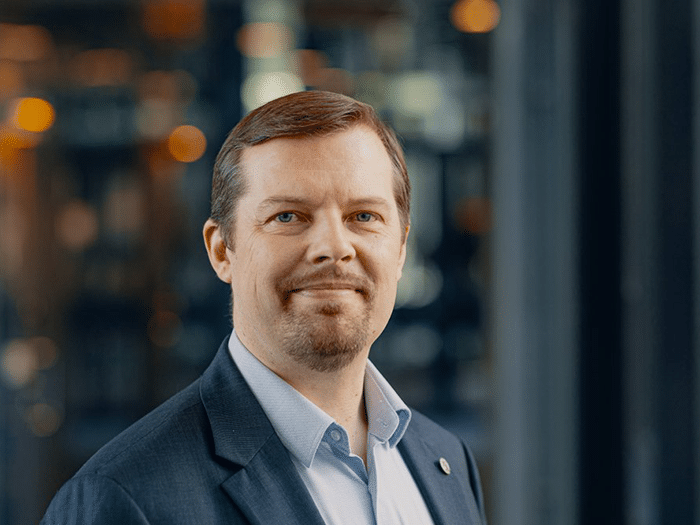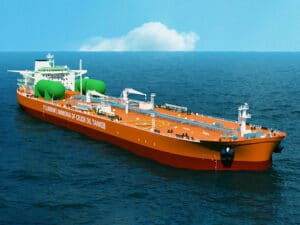
Q&A: Data – shipping’s crystal ball?
Written by Heather Ervin
Mikko Kuosa, CEO of NAPA, talks decarbonization in maritime
Marine Log recently talked to Mikko Kuosa, CEO of software developer NAPA on its role in decarbonization in the maritime industry.
Marine Log (ML): How can industry collaboration on decarbonization work in practice?
Mikko Kuosa (MK): In our experience, for collaboration to work, we need two key ingredients: solid contractual and operational frameworks, and the right data and digital platforms to bring everyone on the same page.
Clear contractual and operational frameworks, that are transparent and fair for all stakeholders involved, will underpin successful collaboration. The idea is to create a foundation where every party shares the targets, the goals, the incentives, as well as the risks, together — transparently and fairly.
Making these frameworks work in practice will be digital platforms that enable the right data capturing and secure information sharing to build transparency, trust and common understanding among those involved.
As echoed in almost all industry congregations, the industry realizes the immediate need for collaboration, and there is a willingness among maritime companies to collaborate. However, translating these intentions into practice has often been the tricky part. For some, the barrier is not knowing where or how to start, while others may be hesitant to share information and resources, for fear of putting their own organizational goals at risk.
Here, data and digital tools are the backbone for successful collaboration – enabling information sharing, strengthening trust, and creating a fair playing field for everyone involved.
With the right data and digital tools, not only is the industry empowered with greater transparency, but it is also able to plan ahead more confidently. Using simulation tools powered by digital twins, shipowners and charterers can quantify the impact of new business models or partnerships on their operations and predict the impact of energy efficiency measures, such as weather routing or slow steaming, even before they are implemented.
Using digital twins in this way gives stakeholders solid evidence of not just the technical viability but also the business and operational viability of the solution and set-up. And these tools are already up and running, supporting partnerships that drive decarbonization across our sector, from shipyards to sea.
ML: How can tensions between safety, profitability and sustainability be resolved to solve climate challenges?
MK: There doesn’t need to be a trade-off between safety, profitability and decarbonization – what companies need is a clear view of what different scenarios for their low-carbon future could look like. As such, data analysis and simulation tools are a game-changer for shipping’s decarbonization transition, by enabling a new level of insight.
Data analysis and simulation tools remove a lot of the guesswork currently hindering action on emissions reductions and sustainability more broadly. In practice, they allow decision-makers to foresee the impact of new technologies, regulations and contractual frameworks on their operations and business, and facilitate the smooth deployment of any new technology on board. Decarbonization shouldn’t be a leap of faith, and by bringing unrivaled insight across ship design, safety and operations, these data-driven tools help predict how various solutions will work in practice.
For example, using a ship’s digital twin, we can estimate the fuel and emissions savings that clean technologies such as wind propulsion can generate for a specific vessel, given its design, typical routes, and operational patterns. This gives owners more clarity about the exact benefits of a solution and how this will impact compliance with the regulation. But it doesn’t stop there: with digital twins, we are able to evaluate where new systems like batteries or additional tanks for alternative fuels should be installed on a ship – and even simulate how these would impact a vessel’s stability and operational profile, including the need to adjust routes to account for the need to bunker more often, for instance.
Furthermore, simulation tools can give more clarity on the commercial implications of new business models, contractual frameworks and partnerships. Having this certainty helps individual stakeholders plan, implement, adapt, and make progress with confidence – meaning that digital platforms are central to the success of decarbonization overall.
ML: Are there any recent case studies that show how companies have come together to fix the “split incentives” problem and eliminate the practice of “rush to wait” to cut emissions?
MK: The Blue Visby solution merges digital technology and a novel contractual framework to bring the industry together and address legacy issues like ‘split incentives’ and ‘rush to wait’ head-on. Underpinned by NAPA’s state-of-the-art technology, Blue Visby helps optimize and stagger arrival times for groups of vessels travelling to the same port. Each vessel is given a target arrival time which lets them slow down and minimize fuel consumption, without losing their ‘place in the queue’.
At the same time, the contractual framework underpinning Blue Visby aligns all parties involved in a voyage, including ship owners, charterers and cargo owners, behind the same incentives by sharing risk and reward.
Fundamental to the success of Blue Visby is its neutral and transparent digital platform, which provides the visibility and evidence needed to build and maintain trust. With everyone on the same page, we can achieve a 15% reduction in greenhouse gas emissions from the wet and dry bulk without compromising on the bottom line.
The novelty isn’t that the ships are optimizing their voyages – it’s that Blue Visby allows all stakeholders to do this collaboratively and smartly for maximum impact. Crucially, this is done in a way that aims to ensure that no one loses in the process, as the costs and benefits of joining the project are shared between the parties.
ML: Are there any lessons learned that could make or break collaborations where these efforts are concerned?
MK: As the industry grasps the importance of acting on climate change, a growing number of companies show a willingness to collaborate. But what is often missing is a clear framework for collaboration, that would enable different stakeholders to come onboard partnerships without hesitation, and with the confidence that cooperating will not jeopardize their individual organizational goals. Only with this assurance will shipping be able to embrace the cooperation opportunities made possible by the digital era and make the most of them to drive this period of change.
From our experience supporting partnerships from shipyards to sea, it is now clear that successful collaborations rely on flexible thinking and the willingness to explore new ways of working. We also know that digital tools are the backbone of successful collaborations, enabling information sharing, strengthening trust, and creating a fair playing field for everyone involved.
We also see that collaboration in shipping creates real impact when we bring together diverse and complementary fields of expertise, each making valuable contributions to the common project. Taking for example our recent joint research projects with Marubeni or with Norsepower and Sumitomo, making collaboration work in practice rests on uniting experts and learning from each other. Effective cooperation is a win-win situation, in which all partners improve their outcomes, gain clarity, future-proof their assets, and contribute to the emissions reductions that are urgently needed by the planet.
At the heart of these new business models is a commitment to a common goal. Allowing a diverse group of stakeholders to see eye to eye needs to be underpinned by a shared vision with mutual benefits and rewards. Success also depends on being willing to break away from established practices and daring to innovate. From new contractual frameworks to combining clean technology solutions, the answers to tomorrow’s problems don’t lie in the past.
ML: Finally, is there anything new or upcoming at NAPA that the greater maritime audience would find of interest?
MK: One thing keeping our team busy is phase two of our joint simulation project with Norsepower and Sumitomo.
The study aims to investigate the impact of combining rotor sails with voyage optimization and quantify the emissions reduction potential of this joint approach. While combining wind propulsion and weather routing seems like a natural fit, ship owners and charterers need concrete data before making investment decisions.
Aiming to provide this clarity to decision-making, the first phase of the project leveraged insights from NAPA’s ship performance model and its voyage simulation tools, as well as Norsepower’s actual performance data and specifications provided by Norsepower and SHI-ME. Analysing yearly voyages of six popular trading routes, the joint simulation project found an average CO2 reduction potential of up to 28%.
The second phase of the project will build on these findings to further enhance the performance of vessel equipped with rotor sails and explore new optimization strategies.
This is a tangible example of how, by modelling the impact of these changes, we’re able to outline what greener shipping may look like and, overall, strengthen the business case of investing in decarbonization solutions today.




